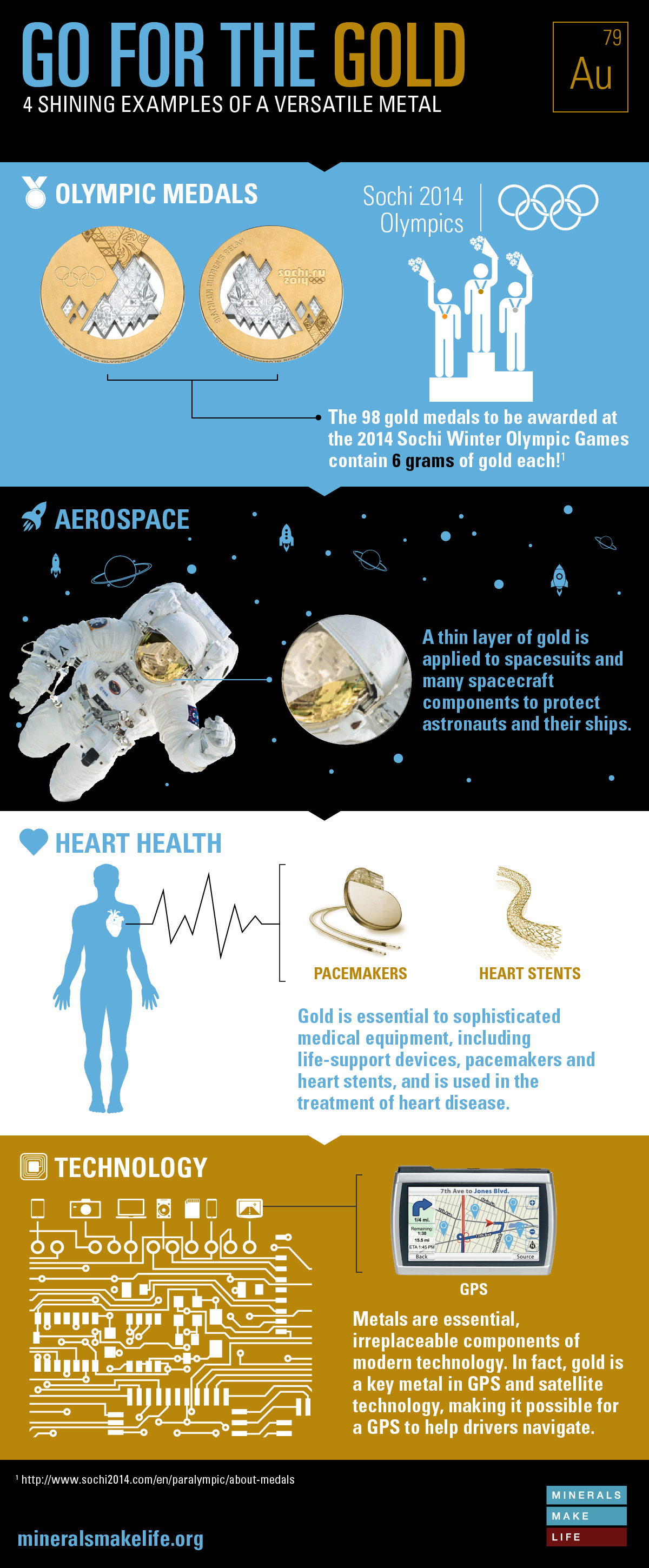February 19, 2014
Gold’s Impact on Modern Life
Gold is one of the world’s most sought-after minerals, prized f...
Read More ›
Recently, the World Gold Council (WGC) commissioned a report, “The Social and Economic Impacts of Gold Mining,” which illustrates how the gold mining industry has brought substantial economic growth to gold producing nations. Key findings show that the gold mining industry directly contributed $83.1 billion to the global economy in 2013, and industries that utilized gold added more than $171 billion. Furthermore, gold mining brought substantial job growth in 2013, directly employing more than one million people around the world.
In the U.S., gold mining is key to our manufacturing sector and technological advancement. In fact, small amounts of gold are found in almost every sophisticated electronic device from phones and calculators to GPS devices and electronic medical equipment, including life-supporting devices and wires for pacemakers and heart stents.
Moreover, gold mining is an economic driver. In 2014, the U.S. produced 211 tons of gold, bringing an estimated value of $8.6 billion to the U.S. economy. Alaska and Nevada are the nation’s top producing states of gold and home to National Mining Association member companies Coeur Mining, Hecla Mining, Kinross, Newmont and Barrick, which support not only their local communities by bringing high-wage jobs, but also our national economy. Take Hecla for example, Mayor Merrill Sanford of Juneau, Alaska, recently discussed Hecla’s contributions to her community, emphasizing the 800 direct and indirect mining jobs that have been created in the past 20 years and its contributions of more than three-quarters of a billion dollars to the Alaskan economy.
Learn more about gold’s uses in everyday life in our infographic below.
